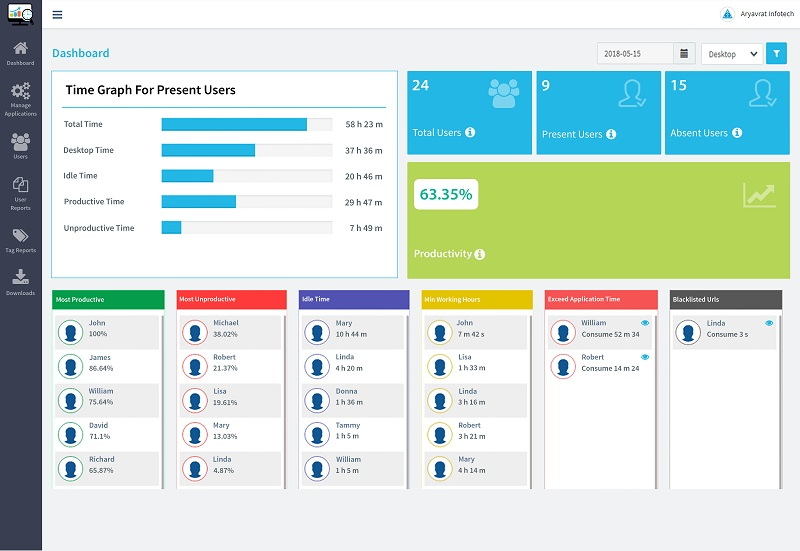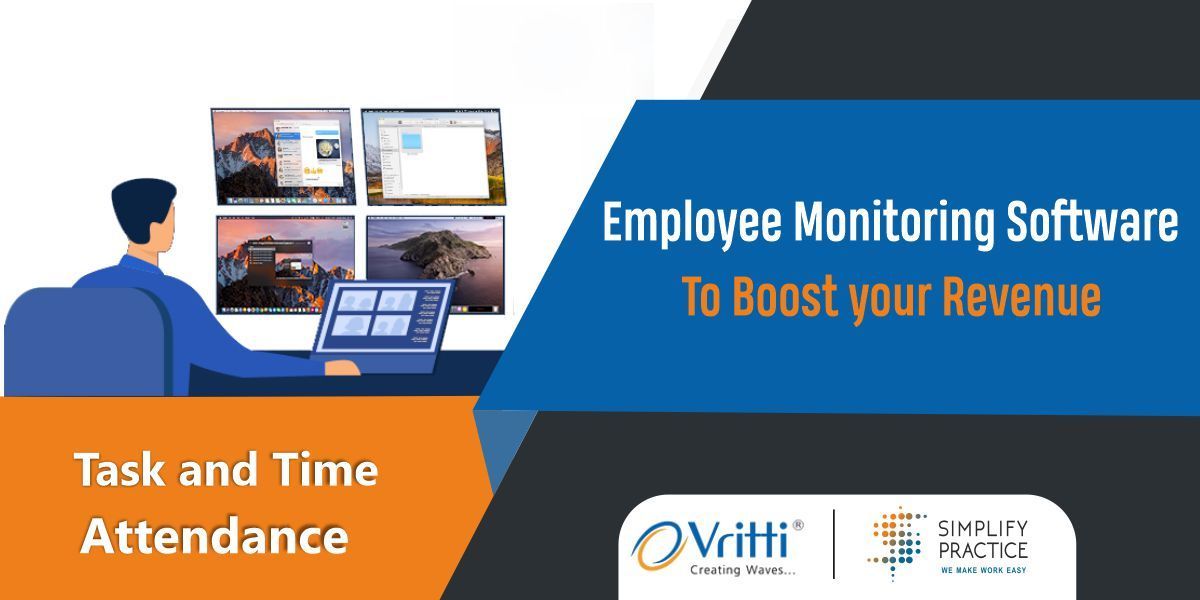Handy Suggestions To Picking Time Tracking Monitoring Services
What Exactly Is Software For Employee Monitoring And What Do I Have To Know Before I Choose?Employee monitoring software is a kind of software used by businesses to monitor and track employees' actions. Employers can collect information about employee behavior including Internet usage, application usages, keystrokes or even screenshots. The primary purpose of employee monitoring software is to increase productivity, ensure the compliance of policies, safeguard sensitive information, and address security concerns. There are a variety of factors to consider when choosing an employee-monitoring software. Here are a few important things to consider the following: Features - Determine which features your company requires. Features that are common include: activity monitoring (including website blocking), keystroke logs (including application usage tracking) and email monitoring and reporting. Prioritize the features you want to use based on your monitoring goals.
Privacy and Compliance: Make sure the software complies with the ethical and legal guidelines on employee monitoring. Know the relevant laws as well as regulations and laws in your region. Look for software that provides flexible and transparent settings to ensure that privacy rights of employees are respected.
User-Friendliness. Consider the user-friendliness and accessibility of the software. Easy-to-use interfaces and simple setup procedures will speed up and simplify the implementation. Flexible dashboards and easy tools for reporting can help you to navigate through the data quickly.
Integrity and compatibility- Check that the software works with your current IT infrastructure, including the operating system and email client, as well as the project management software, and collaboration platform. Compatibility permits seamless monitoring of your systems without disrupting normal operations.
Data Security- Examine the software's security features to safeguard the collected data. It is crucial to utilize encryption, secure storage of data and access control. Be sure that the software provider is recognized for its data security records and has strong security measures.
Scalability - Think about the software's ability to grow with your business. Select software that is easily scaleable to meet your changing needs when you are planning on growing the size of your staff or establishing new offices.
Reporting and Analytics- Assess the capabilities to report on the software. You should look for tools that offer an extensive view of employee productivity, scheduling of time, as well as trends. Customized reports and analytics will help you take informed choices and make improvements.
Customer Support - Determine the level of customer support provided by the vendor. Check the availability of their technical support and also. When problems arise, excellent customer service guarantees that you receive prompt assistance.
Cost - Be aware of the pricing structure like a one-time fee or subscription, or dependent on the usage. Learn about the pricing structure and any additional charges for support, updates or other features. Your budget should be balanced and the value of features with what you can afford.
Transparency and Communication among employees - Establish clear communication and transparency with your staff about the use and implementation of software for monitoring. Communicate clearly the reason the work scope, and expectations with respect to the monitoring. Discuss any concerns they might have and ensure they understand the ways in which their privacy will be respected.
Think about these points to make an an informed choice and select the employee monitoring software that can meet your business' needs while respecting employees' privacy. Take a look at the most popular employee monitoring company for website info.

What Are The Strengths And Features Of The Software For Tracking Employees?
The software offers a range of features that allow you to monitor and analyze the activities of employees. Some features are common to every employee monitoring software. This feature offers a comprehensive overview of employee time spent working.
Keystroke Logging - Keystroke recording records each keystroke that employees make. It is a great tool to determine productivity bottlenecks as well as identify illegal activities.
Screenshots and screen recording- Certain software can record employee screens in real time or takes screenshots at regular intervals. This feature can be useful for monitoring productivity, verifying compliance and troubleshooting problems.
Internet Usage Tracking - This feature monitors employee's internet activities such as websites visited, search queries made, and the download of downloaded files. This feature can help identify excessive non-workrelated browsing, possible security risks, as well as policy violations.
This feature tracks all applications used by employees in the workplace. It gives insight into the applications that are frequently used, as well as helping to determine any inappropriate or unapproved use of the application.
Email Monitoring lets employers keep track of all employee email. This includes sent and received emails, email attachments and the emails' content. It makes sure that employees are in compliance with the policies of the company, stops data leaks, investigates suspicious activity and helps to ensure compliance.
Document and File Tracking - This function tracks changes to files and their access. It safeguards sensitive data tracks document collaboration, and ensures compliance with data security guidelines.
Remote Monitoring - Remote monitoring capabilities enable employers to supervise employees working remotely or work from different locations. Employers can track their activities and guarantee productivity irrespective of their location.
Productivity AnalysisSoftware for monitoring employees often includes productivity analysis features which provide insight into the patterns of work performed by employees as well as time allocation and overall productivity levels. These analyses help find areas for improvement and optimize workflow.
Reporting and Analytics - The robust tools for reporting and analytics generate detailed reports based on the information that has been collected. These reports provide valuable insights into employee performance, time management and allocation of resources.
Software solutions that include features for compliance and management of policies can help ensure conformity with industry and company policies and regulations. These software solutions allow employers to define and enforce rules regarding acceptable computer usage internet access, acceptable usage, and data security.
Alerts and Notifications- Alerts and notifications inform managers or employers when certain actions or events take place. They can alert to excessive internet usage or attempts to gain access to restricted websites, or suspicious behaviour.
It is important to be conscious that various employee monitoring solutions may have different functions and features. When you choose a program, be sure that the features you select align with your monitoring goals as well as in compliance with the ethical or legal guidelines applicable to your jurisdiction. Take a look at the top time tracking monitoring service company for more tips.

What Is The Best Software For Monitoring Employees? Conform To The Compliance And Privacy Law?
It is essential that employee monitoring software adheres to compliance and data privacy laws. While the specific legal requirements may vary by jurisdiction there are a few common methods that employees monitoring software is in compliance with the privacy and compliance laws: Consent and Notification- Many jurisdictions require that employees provide an informed consent and are given prior notice of any monitoring activity. Monitoring software for employees usually includes features that allow employers to explain their monitoring guidelines to employees clearly. It is possible to provide written notices or obtain consent through consent forms. Additionally an employee handbook which outlines the policies for monitoring can be incorporated into the system.
Transparent Monitoring Policies- Employee monitoring software encourages transparency by ensuring that employees are aware of the specific types of data being collected, the purpose of monitoring, and the extent of monitoring activities. Clear and comprehensive policies allow employees to know the limits and privacy rights and monitoring.
Principles of Data Minimization- Employee monitoring software frequently uses the principles of data minimization to ensure compliance with privacy laws. That is, only data that is necessary is stored and collected. Insufficient or unnecessary data shouldn't be gathered. By restricting data collection to what is required for monitoring, the software reduces privacy risks and encourages compliance.
Anonymization and Aggregation- Some software that monitors employees anonymizes or aggregates data to safeguard privacy of employees further. Anonymization eliminates personally identifiable data (PII) from collected data which makes it impossible to link information with specific individuals. Aggregation is the process of combining data from many employees to provide insights at the level of a group without single out specific individuals.
Secure Data Storage and EncryptionSoftware for monitoring employees prioritizes the safety of data it collects. Data is protected by secure data-storage practices and encryption methods. Data security is essential in transit, as well in the rest of the data.
Access Controls that have Restricted Rights In order to ensure compliance, most employee monitoring programs include access controls and restricted rights. Employers have the option to restrict access to monitoring information to those with legitimate requirements like HR employees or the designated administrator.
Employee Rights and Remedies - Adherence to compliance and privacy laws means respecting employees' rights. Software for monitoring employees usually has tools that allow employees to access and correct their own monitoring data and also submit complaints. This lets employees take action and exercise their rights when they feel their privacy rights have been breached.
Conformity to Data Protection Regulations – Software for monitoring employees is developed to be in compliance with any applicable regulations. For example, the General Data Protection Regulations of the European Union and the California Consumer Privacy Acts of the United States. Compliance means implementing security measures to protect data that respect the rights of the data subjects and ensuring the legality of processing.
It's crucial to keep in mind that even though software for monitoring employees can aid in compliance efforts, organizations must also consult legal professionals and be aware of relevant laws and regulations in their respective jurisdictions. To ensure compliance with the privacy and compliance laws, a comprehensive approach is needed that goes beyond the software. It involves specific policies and education for employees as well regular monitoring of compliance. Check out the top rated time tracking monitoring services for blog advice.
